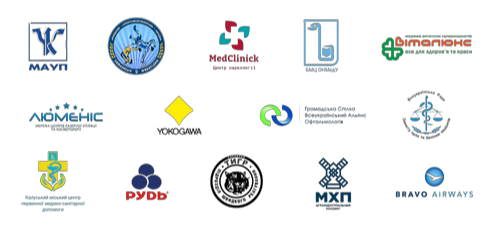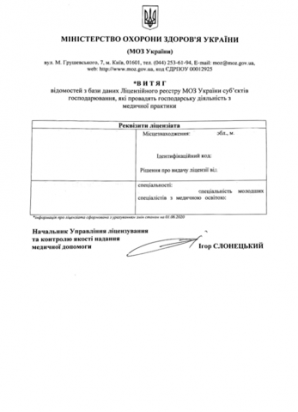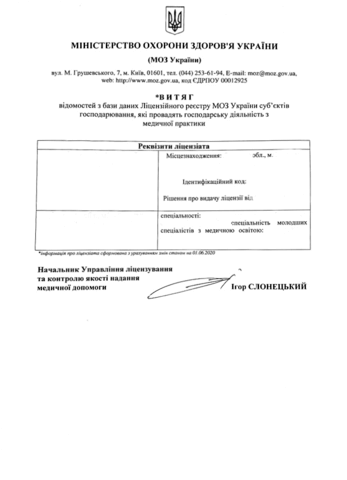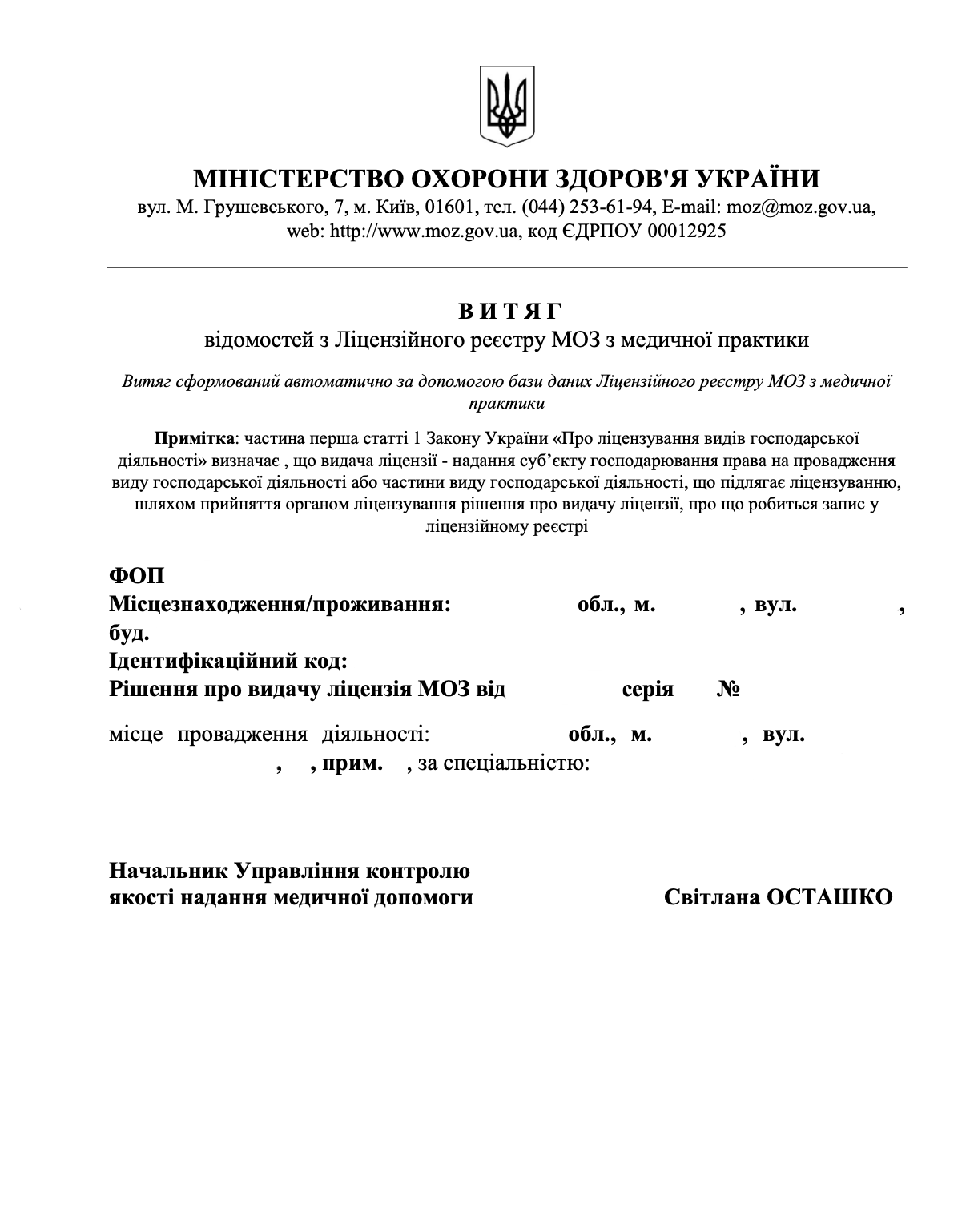Registration and Accounting of Medical Equipment in ESOZ
Cost of services:
Reviews of our Clients
... our work on joint projects assured us of your high level of professionalism
In 2025, for every medical institution—both public and private—the registration and accounting of medical equipment in the eHealth system (Electronic Health System) became not just a new step in the sector’s digitalization but a direct legal requirement.
This has a direct impact on:
- entering into agreements with the National Health Service of Ukraine (NHSU);
- compliance with licensing conditions;
- continuity of funding within the medical guarantee program.
Ignoring the new regulations poses a risk to the entire operation of a medical facility. As a result, healthcare executives and administrators now face the need to properly organize equipment records to avoid violations, fines, and funding losses.
In this article, our healthcare law expert explains who must register equipment in the system, when and how to do it, and which legal details require close attention to ensure the process is smooth and compliant.
You might also like: Inspections of Medical Facilities: Who Conducts Them and How to Prepare
What Exactly the State Requires: Deadlines, Liability, and Updated Requirements
According to the updated regulations, all medical institutions providing care, particularly under the Medical Guarantee Program, must ensure the registration of both existing and new medical equipment in the eHealth system within the established deadlines. This process is mandatory and directly affects contractual relations with the National Health Service of Ukraine, and therefore, the funding of the medical institution.
The updated requirements mandate the inclusion of precise technical specifications for each unit of equipment, specifically:
- name and code;
- location;
- manufacturer, production date, model, serial, and inventory number (if available);
- description (if necessary);
- procurement number, service life (if available);
- reference to related equipment, additional properties (if necessary);
- equipment availability status;
- information about the person who submitted the data.
This data must remain accurate and up to date at all times. Any relocation, decommissioning, or update of equipment must be promptly reflected in the system.
Particular attention should be paid to the completeness of documentation and the accuracy of technical specifications, as equipment records in hospitals directly affect the institution's compliance with licensing requirements and those of the NHSU.
It is important to note that certain categories of medical equipment are subject to specific requirements regarding the availability of technical documentation, which confirms their operability and compliance with technical regulations.
As of today, the Ministry of Health has not set a definitive deadline for the mandatory registration of medical equipment in the eHealth system. "The 2025 medical equipment registration process should begin as soon as this technical feature becomes available in the medical information system (MIS) in use," the NHSU advises medical institutions.
Delays in preparation may lead to serious consequences, ranging from disruptions in funding to the loss of the right to provide certain services under the Medical Guarantees Program.
You might also like: Registration of Medical Institutions and Private Practitioners in the eHealth System
eHealth and Equipment Tracking: How It Works
The Electronic Healthcare System (eHealth) is a national digital platform that integrates all key processes in the delivery of medical services, from maintaining electronic medical records to interacting with the NHSU.
In 2025, an important new module has been added to the system—equipment tracking in eHealth. This module allows healthcare institutions to:
- centrally record the availability, technical condition, and location of medical equipment;
- verify whether the equipment meets the requirements for delivering medical services;
- maintain a transparent database used for NHSU contract agreements and official inspections.
Simply put, the system helps streamline documentation, avoid funding issues, and confirm the institution’s readiness to provide medical services at the required level.
What Medical Equipment Must Be Registered in eHealth and Why It Should Be Listed in the License
The list of medical equipment subject to registration in the eHealth system was approved by the Ministry of Health in Order No. 697 dated April 22, 2025. It includes, in particular:
- diagnostic devices (X-ray machines, ultrasound, CT scanners);
- laboratory equipment;
- anesthesia and mechanical ventilation machines;
- sterilizers;
- physiotherapy devices;
- other tools that directly affect the quality and safety of medical careа.
Why does this matter? Registering medical equipment in the eHealth system is directly tied to a facility’s ability to provide certain types of medical services.
If the equipment is not registered, the institution may lose the opportunity to sign a contract with the NHSU. This applies both to newly established facilities and those already licensed. When updating or expanding the material and technical base, it is essential to promptly update the licensing information.
You might also like: How Can a Medical Facility Sign an Agreement with the NHSU?
Who Is Required to Register Equipment in the eHealth System and How to Do It?
The entry of medical equipment information into the eHealth system must be carried out by the head of the medical institution or an authorized person appointed by them who works with the electronic medical information system (MIS). How is medical equipment registered in the eHealth system?
The process is as follows: all data about the equipment is entered directly into the eHealth system through the MIS interface connected to the facility. The list of equipment must be aligned both with the licensing documentation and within the eHealth system.
It may sound simple, but in practice, it requires precision, legal accuracy, and an understanding of technical details. That’s why many medical institutions turn to specialists who know the procedure inside and out — to avoid confusion, errors, and delays when registering medical equipment in the eHealth system in accordance with current requirements from the Ministry of Health and the National Health Service of Ukraine.
What Are the Penalties for Violating Registration and Reporting Rules?
Failure to comply with the requirements for registration and reporting of medical equipment in the eHealth system may have serious consequences for a medical institution. First and foremost, it affects the ability to provide services under the Medical Guarantees Program.
If the equipment is not entered into the system or if the data is submitted with errors, the NHSU may refuse to sign a contract or suspend funding. Such violations may also be classified as non-compliance with the licensing conditions for medical practice.
Special attention should be paid to the accuracy of the information: submitting false data to a government system may raise suspicions of misconduct and lead to legal complications.
Another important point is that responsibility lies not only with the employee who entered the data but also with the management of the institution. Management is accountable for ensuring that the medical facility operates in compliance with current regulations. To avoid putting the entire institution at risk, it is best to get everything right from the start.
You might also like: Revocation and Suspension of a Medical License
We Help Register Equipment in the eHealth System Without Errors or Risks
Registering medical equipment in the eHealth system is more than just entering data. It requires compliance with the standards of the Ministry of Health and the NHSU, legal accuracy, proper documentation, and peace of mind during inspections.
Our law firm has extensive experience supporting medical institutions, working in this field since 2026, and we understand how the system works from the inside. We guide the process from the initial paperwork, ensuring accurate data entry during the registration and accounting of medical equipment in the eHealth system and licensing registries.
We help you:
- prepare the required technical documentation;
- conduct an audit of medical equipment and assess its compliance with current Ministry of Health and NHSU regulations;
- enter all data accurately and without unnecessary delays;
- update licensing records in case of changes to the material and technical base.
We handle all organizational and legal aspects because we understand how important it is for everything to function smoothly. With us, everything is official, precise, and on time.
Contact us today and trust the process to experienced professionals and be confident in the result.
Our clients







